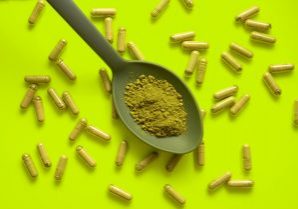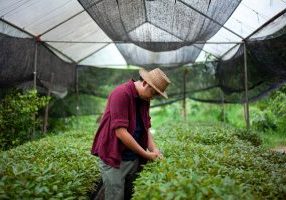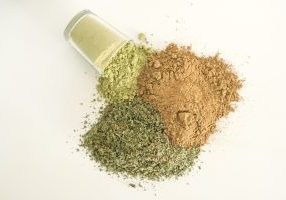So you’ve dipped your toes in the proverbial kratom pond. You’ve looked around; you’ve decided to give kratom a try. But you’re suddenly being bombarded with dozens of different varieties, names, and words that you don’t really understand.
Where do you go from here?
All that you need is a simple, straightforward guide to the strains and colors of kratom and what they should mean to you. We’ve got you covered! Today, we’re putting together that very guide so that all kratom users, new and experienced, can gain the most complete understanding of what they’re looking at when browsing kratom.
Why Are There Different Kratom Varieties?
Those new to kratom might be wondering how it is that one plant can come in different varieties when it reaches the market. The difference lies in the growth and methodology, not so much in the plant itself.
When kratom leaves are harvested, they then need to be dried, blended, and then packaged as they will be sold. Depending on where the tree grew and how the conditions were, the exact makeup of the plant will differ.
Then, the drying method will change the final chemical composition of the leaves. The final product depends completely on what type of process the leaf went through when it was grown to when it was dried after harvesting. All of the differences of kratom varieties come about during these parts of the process!

How Kratom Colors Are Classified
When you browse kratom varieties, you’ll likely see that kratom is usually divided by Red, Green, and White varieties. There are a few specialty colors that might pop up from time to time like Gold or Yellow, but most will be Red, Green, or White.
Over the years, there has been some dissent within the kratom community about what the meaning of these colors truly is in the industry. Is it a marketing effort? Is it based on the color of the leaves? Or is it something else?
In our opinion, it’s a bit of all of them! Certain leaves have colored veins, which lead them to be a specific variety, and the marketing component can’t be overlooked either.
Drying Matters Most!
Ultimately, however, the color of kratom often has a lot to do with the way that it was dried! Green leaves are usually dried indoors for 80% of their drying time while whites are dried inside in the dark. Red leaves are given more sun exposure via outdoor drying or UV lighting, depending on the variety.
Often, the variation between red and white kratom will be more simply explained as red being more “mature” and white being “younger.” In terms of overall light and sun exposure, this is true, but the terminology can be quite confusing.
The only way to be absolutely sure about what the color terminology means in regards to your kratom is to ask the supplier or vendor that you are purchasing from. They will be able to give you the most accurate information about what you should expect from the kratom.
All About Kratom Strains
In addition to seeing a lot of different color words used when marketing kratom, you are likely to have also seen a lot of different strain names such as Maeng Da Thai or Red Bali. What are these strain names, and how are they decided?
Today, we’ll attempt to unravel some of the confusion that exists about strain names and their origins.
There are a lot of specific strain names that are well-used and well-known:
- • Red OG Bali
- • Maeng Da Thai
- • Borneo
- • Super Green Malaysian
- • … and more!
All of these names seem to have specific meanings, but do the kratom varieties truly align with their names?
Yes and no.
Originally, kratom sellers would create the names for their kratom based on where it came from or what experience it would give you. Bali kratom, for example, may have originally been grown solely in Bali, but now the name may refer to the strain’s lineage (where the seeds came from), or even to different strains that have comparable alkaloid profiles.
Many of the origins of kratom strain names have similar stories. Some names, like Borneo kratom, were originally given to the strain because the kratom was grown there. Now, however, the name doesn’t always indicate where the particular leaves were harvested.
Instead, the name indicates the specific style, content, and processing method that the kratom was created with.
What To Expect From Specific Strains
As mentioned above, kratom strain names might not always match up with the location that the kratom originates from, but the stain names do consistently describe specific attributes of the kratom itself.
Red Bali kratom, for example, is known for its high alkaloid content, but it tends to be grown in Sumatra because of the more consistent growing conditions.
Thus, the strain names are assigned to kratom based on:
- • The conditions the trees were grown in
- • The alkaloid content
- • The drying method
- • The processing
These four factors are what makes up a specific strain of kratom, and you can expect different effects from Kratom depending on how exactly it falls into these four categories.
Are New And Unique Strains Trustworthy?
Now that you know more about how the strains are named and what the colors mean, you might be wondering if you can trust a strain like a Platinum Maeng Da Thai or Gold Malaysian blend. Do these blends fit the pattern, and what would they be like?
Our belief is that as long as you make your purchase from reputable vendors, you can give any strain a chance! Reliable vendors will explain the strain and its attributes in their product descriptions, so use that info to get an idea of what to expect when you try something new.
Improving Kratom’s Future
As you can see, understanding what to expect from kratom when the names are so confusing and seemingly randomly assigned can be overwhelming. We support organizations such as the American Kratom Association that are pushing for more clarity in the kratom industry because it would better inform and protect consumers like you.
Among other things, we believe that GMP compliant processing, testing, and marketing is going to be a requirement in the future. Until then, we will do our best to ensure that you can get a clear understanding of our products! As always, feel free to contact us with any questions that you might have.












